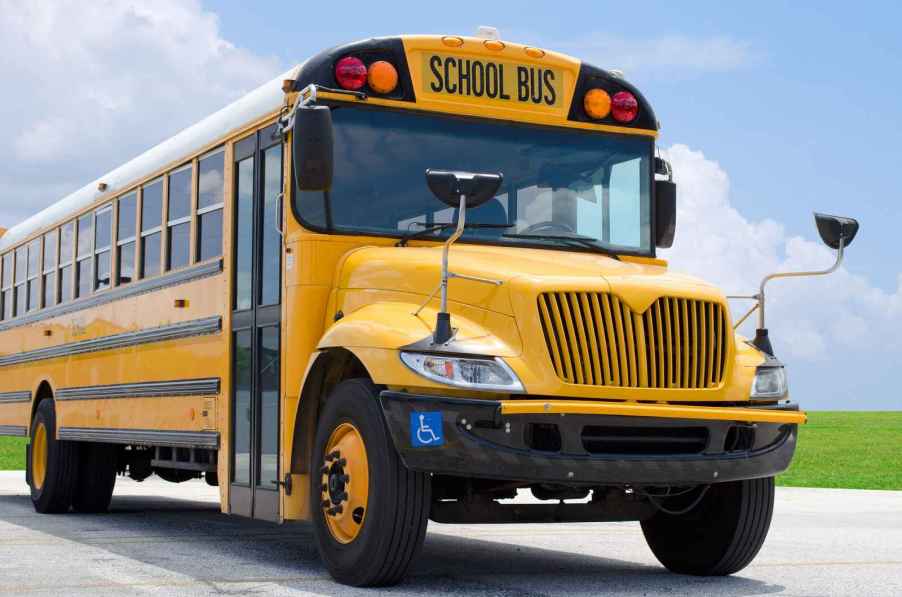
School buses require certain features after the deadliest accident in modern history
It was late Spring 1976. A bus carried more than 50 people, most of them children attending Yuba City High School in California. They were about 100 miles away, nearing the choir’s destination, when they entered an elevated freeway ramp in Martinez. Suddenly, the bus lost its brakes. The driver attempted to control the vehicle, but the school bus broke through the several-inch-thick guardrail. The bus fell. Nearly 30 people, all but one of them students, died. The near-unspeakable details of the accident, including relatively lengthy confusion about how many and who was on the bus, revealed several preventable errors that led to many regulation updates.
Unfortunately, a 1980 analysis abstract viewable via the National Library of Medicine argued that controllable factors contributed to the severity of the accident.
First, the analysts deemed the ramp itself “inadequate.” Eventually, area officials would update the ramp, citing seismic activity-related safety precautions.
Next, analysts concluded that the bus driver, who survived, might not have been familiar with the warning signs of a malfunction. Moreover, the driver didn’t seem to know how to safely control the bus in the event of a mechanical failure, for that matter.
Finally, there was the school bus itself.
The chartered school bus was decades old at the time of the accident. On the Martinez exit ramp, the bus lost its brakes. One student survivor recalled the driver putting the pedal all the way to the floor several times, noting the fear on his face reflected in the rearview mirror. Analysts cited neglected maintenance.
What’s more, the bus’s antiquated body design tragically added to the death toll.
The school bus flipped over while falling more than 20 feet, landing on its roof. The roof lacked reinforcement, and the collision collapsed the structure, crushing students and adults inside. First responders weren’t able to easily access crash victims without viable entry points.
Rescuers brought in a crane to gently lift the bus, but the effort took precious time.
Heartbreakingly, the 1980 analysis says, “In the present report ten of 25 killed were judged possibly salvageable with immediate extrication.”
One Yuma City High School graduate who lost several friends and acquaintances explained that the trauma of the event prevented her from allowing her own children to travel via bus for school events. Lori Hudson wrote:
“One of the ways, and there were many, this impacted my life, was I wouldn’t let my children travel on field trips with their schools unless I drove them in my car. One trip my daughter completely missed out on when her school wanted to take them 2 hours on a charter bus to see the Amish in Lancaster, PA. I was so frustrated as to why there was need to take 7 year olds so far. I couldn’t take her and I was told she would have to go to school that day if she didn’t join them. I think I said something like, ‘Arrest me!'” she recounted.
“I was decent friends with the principal and shared my story. Despite my very personal experience I could not justify in my own mind the cost and reasoning behind putting all these babies on charter busses for hours of driving far from home. I think I would have balked regardless, but my emotions were definitely a tad bit over the edge. Montana felt left out of course, and I felt terrible, but it was something I just couldn’t shake. It wasn’t rational, statistically, but sometimes when you’re a parent, you aren’t rational and that is just how it goes.”
In turn, school buses now have reinforced panels and drivers must meet specific qualifications.
These days, you might notice several black horizontal trim lines running down the sides of school buses. The lines trace the reinforcement measures installed along the body.
Authorities charged the driver, Evan Prothero, a longtime employee of the bus company, after the tragedy. However, ABC10 reported in 2017 that they ultimately dropped the case.
Now, drivers must prove proficient in their bus’s operation, among other additional qualifications.
In 2014, a transportation supervisor, as well as a state-certified school bus driver instructor, replied to Hudson’s post. She explained just how much the 1976 bus accident affected the industry:
“This accident prompted the State of California to adopt over 20 new laws and regulation[s] dealing with passenger transportation safety. As an instructor, I make sure that each one of my students learns about this accident, learns about the new laws and regulations, and is proficient in each vehicle that he or she drives each day to transport students to and from school and to take students on an activity trip. We love our “precious cargo” and work hard to prevent a tragedy like this from happening again.”



